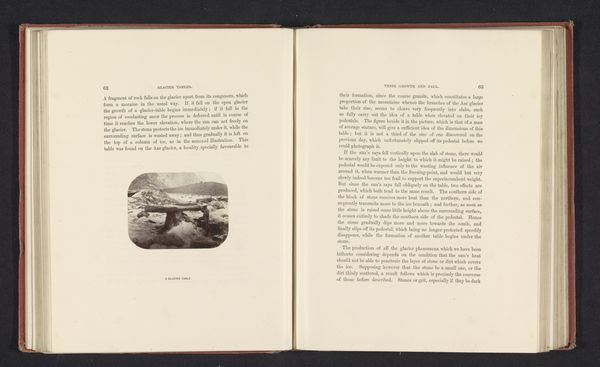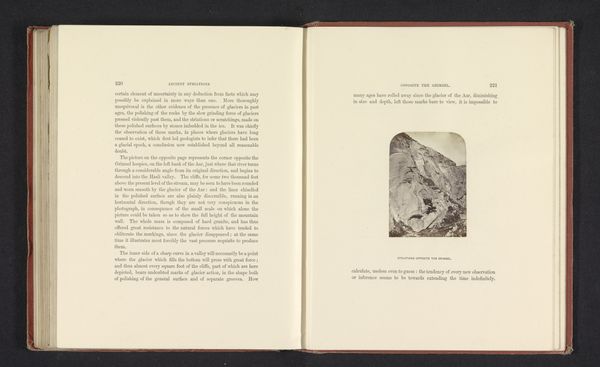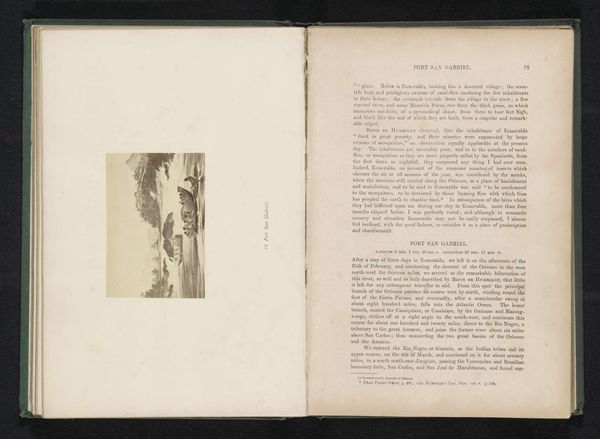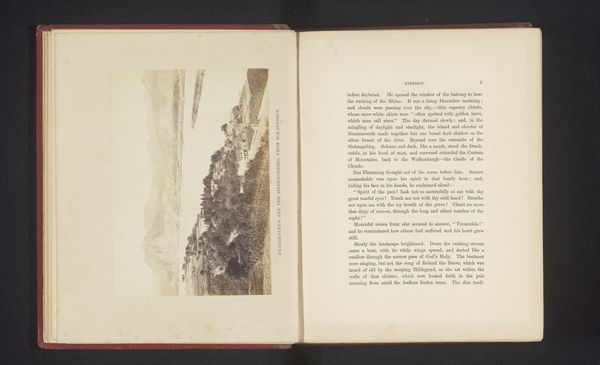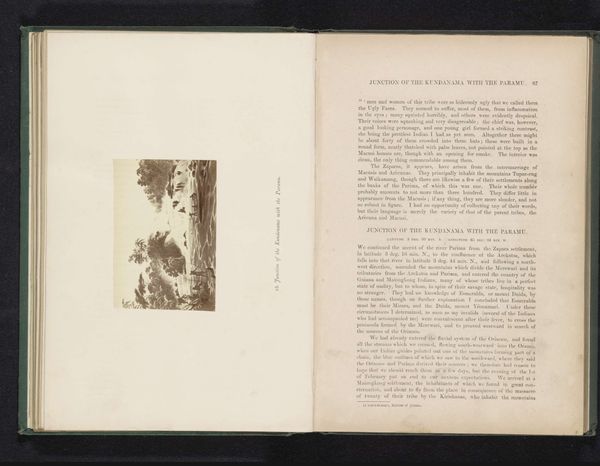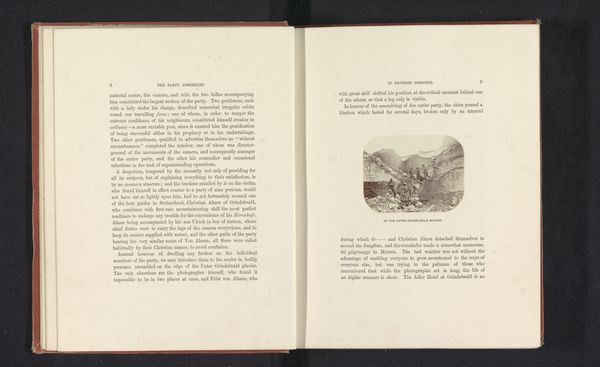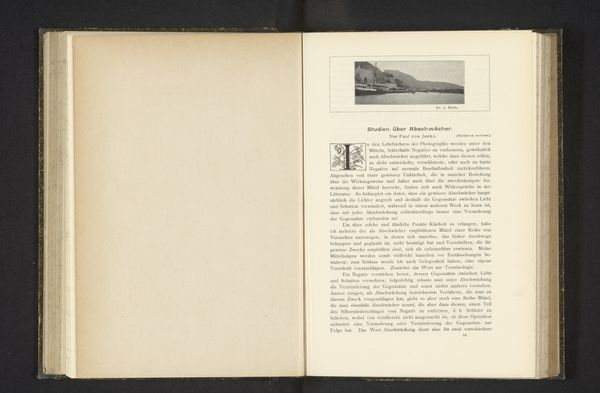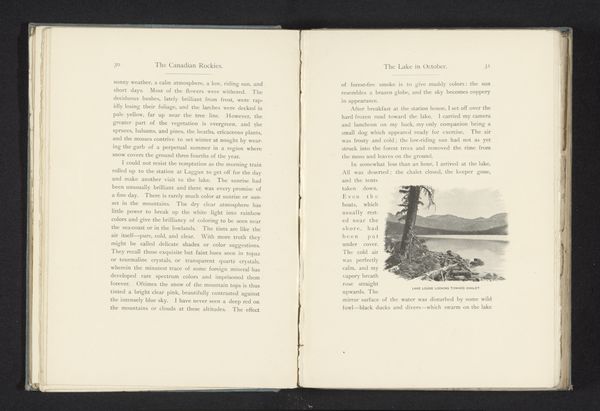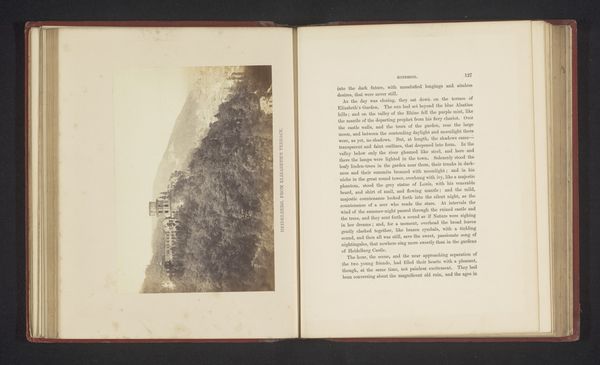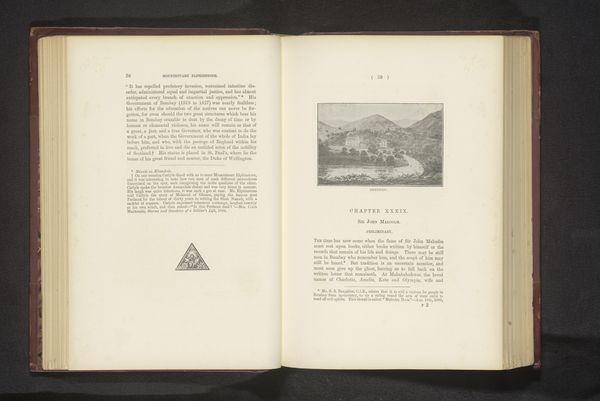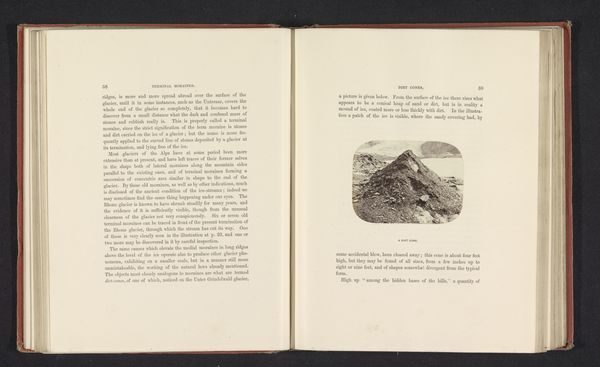
print, photography, albumen-print
#
script typeface
#
aged paper
#
paperlike
# print
#
landscape
#
personal journal design
#
photography
#
personal sketchbook
#
thick font
#
handwritten font
#
thin font
#
albumen-print
#
historical font
#
small font
Dimensions: height 69 mm, width 97 mm
Copyright: Rijks Museum: Open Domain
Curator: Here we have "A glacier remanié", a fascinating albumen print created before 1866 by Ernest Edwards. My initial reaction is a subdued stillness—the tones feel quite muted and aged, a somber echo of a landscape in slow transformation. Editor: Indeed. Looking at it, the first thing that strikes me is how Edwards uses the albumen process to capture a seemingly straightforward landscape while subtly investigating photographic materials in relation to documenting glacial landscapes, I find it truly remarkable. Curator: Note how Edwards meticulously frames the glacier within a defined vignette on the page, contrasted against surrounding descriptive text. How might that layout shape or inform our understanding? Editor: I find it curious. On one hand, it acknowledges that a photographic print of the mid-19th century could never be fully objective or transparent; but, on the other hand, it gives voice to his historical context—what tools and processes, as well as ways of recording glaciers at his disposal. Curator: A vital observation. One notices how tonal gradations, varying from the textured grain of aged paper, lend atmospheric weight. In concert with sharp peaks, that lends it remarkable depth, don't you agree? Editor: Absolutely, although there seems an evident contrast with what may be visible to contemporary viewers. His artistic decisions may be more important here. After all, he is consciously choosing which part of glacier geology can be photographed, selected, and represented with an albumen print on paper within the space of his book? Curator: Do you find the materiality affects our perception and assumptions of glacial forms and movements here? Editor: Materiality, technique, format, context... it's the synthesis of these layers through which Edwards offers a way of thinking about photographic representation of glacial landscape. The use of Albumen print allows for sharp details that speak both, science and photography. Curator: A resonant thought. Reflecting now, the albumen print certainly serves not only as a mere transcription, but instead as the active ingredient in shaping narratives and cultural memory about our transforming natural environments. Editor: A truly invaluable, insightful point. It provokes reflection of human observation meeting material manipulation to reveal the historical construction of glacial perception itself!
Comments
No comments
Be the first to comment and join the conversation on the ultimate creative platform.
